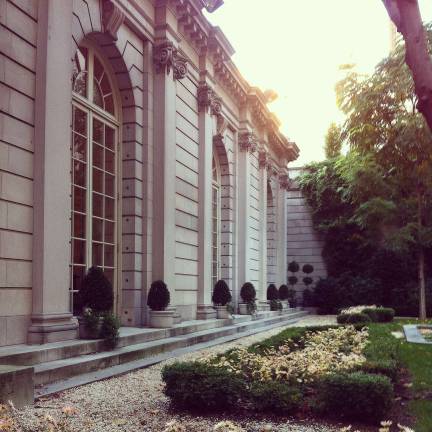Why the frick folded News analysis


Just months after the Frick Collection announced a renovation and expansion, a grassroots effort to block the project quickly began to take shape. The opposition, which began with a small group of local residents, ballooned to a grassroots and online force, collecting thousands of signatures and winning the support of preservation groups and even well-known artists.
Yet despite the clear threat developing, Frick officials stayed stoic, confident that the proposal would clear the necessary hurdles and receive approval from the city’s Landmarks Preservation Commission.
That early confidence now seems like a miscalculation.
On June 4, a year after the Frick first announced its plan, the museum’s board of trustees elected to change course and revisit the expansion in a way that won’t eliminate a tiny garden on E. 70th Street that had become a flashpoint for the opposition. Museum director Ian Wardropper, who had argued that the expansion was critical to the Frick’s growth, is now having to reassess how the Frick will move forward.
From the outset, the Frick underestimated the size and strength of the opposition. While Wardropper said that he expected criticism, particularly of the destruction of the garden, the public reaction was more fervent than museum officials anticipated. The profile of the garden, a small, flourishing patch to the east of the Frick mansion continued to rise as time passed.
“There was such an outpouring of emotion toward this garden,” said Charles A. Birnbaum, founder and president of the Cultural Landscape Foundation and an early opponent of the plan. “When you stop to think about it, it is this little postage stamp.”
Frick officials maintained that the garden, built in 1977 on the site of three museum-owned townhouses that the Frick razed, was a temporary substitute for an eventual addition, a claim that some critics refute, due to the wording of a 1977 press release, found by Birnbaum, that suggests the garden was intended as a permanent fixture.
Birnbaum noted that the museum remains “good stewards” of the garden.
“When we’re involved in controversies with landscapes, most often the landscape is in bad shape, and people will line up behind seeing its demise,” Birnbaum said. The Frick’s garden, now in full bloom after a lengthy winter, doesn’t appear to need much improving, which helped secure its fate.
The Frick has immediate needs, officials say, but, unlike the garden, it hides them well. The now-foregone addition on the garden site would have replaced the narrow reception area with an expanded entrance hall to better accommodate an audience that has grown by around 20 percent in recent years. The Frick also hoped for a larger, 220-seat auditorium, the museum’s first classrooms and a larger, updated conservation room to replace the crowded existing area, as well as improved wheelchair access.
Elizabeth Ashby, an Upper East Side resident and co-founder of preservationist group Defenders of the Historic Upper East Side, said she knew early on that the museum’s proposal, which she called a “misjudgment,” would earn criticism. Community members she spoke with were “aghast” at the possibility of a new building on the garden lot, having come to cherish the residential scale and aesthetic of the museum.
“The plan was what did the deed,” said Ashby. “I don’t think there was anything [the Frick] could have done to make people want to support it.”
After its announcement in June of 2014, the museum hoped for a presentation to LPC in early 2015, a date that kept moving. In that time, an opposition force mounted. The grassroots coalition Unite to Save the Frick formed by early fall, four months after the museum’s announcement. By November, the group’s online petition had 2,800 signatures and the support of local preservationists. A month ago, prominent artists, including Frank Stella and Richard Prince, added their names to an opposition letter addressed to Mayor Bill de Blasio and the chair of LPC.
Wardropper said that, despite the outcome, the museum did right by its neighbors and community when it left time for a lengthy public discourse before an eventual application to LPC.
“We could have rushed into things and taken people off guard,” Wardropper said. “We didn’t do that. That’s not really our way.”
David Masello, a Frick member and executive editor of design magazine Milieu, was one of the earliest opponents of the expansion, and, as he wrote in the New York Times when the Frick first announced its plan, doesn’t see much need for change at the museum.
He suggests that the Frick regain some public favor that could have been lost over the past year by opening the garden, which has always been inaccessible to the public. The withdrawal of the existing proposal might also help rehabilitate a blemished image that comes from defending a contested push for expansion.
The Frick remains a beloved New York institution, one that’s both a neighborhood gem and a destination. In its failure to win support for the expansion, the museum’s successes and singularity as an institution become more apparent. Those who cherish the museum’s intimacy fear that a change of the magnitude the museum proposed would jeopardize what has become unique during New York’s era of mega-development.
“It would have changed the whole milieu of the museum, which could be a really sad thing,” Masello said.